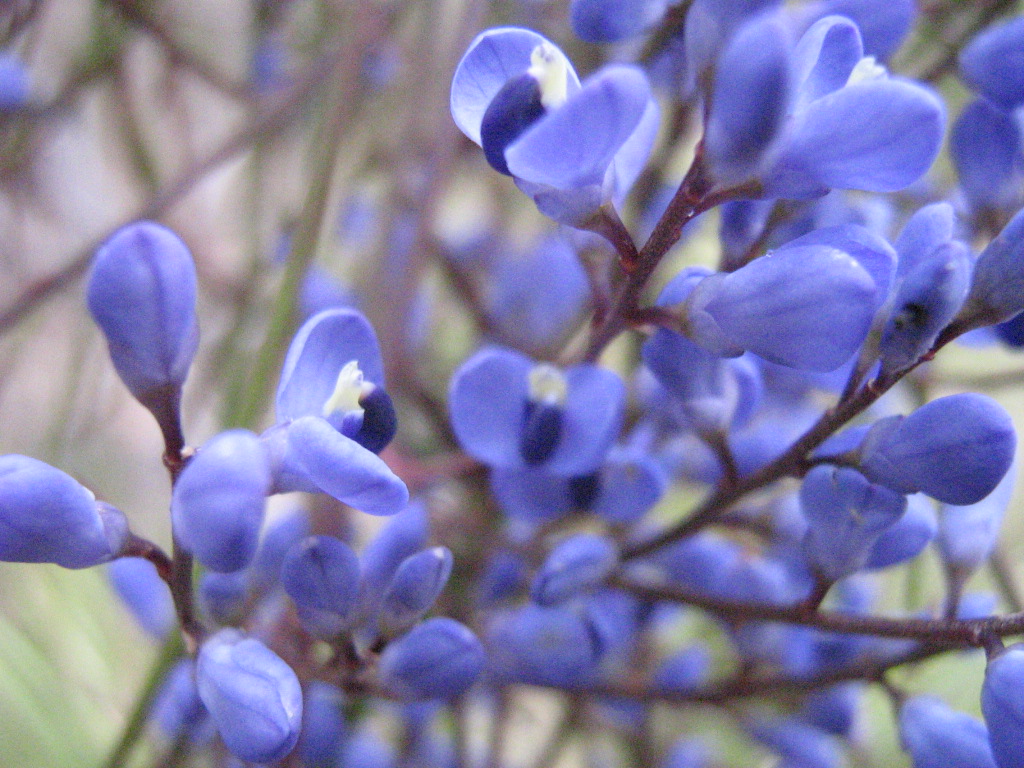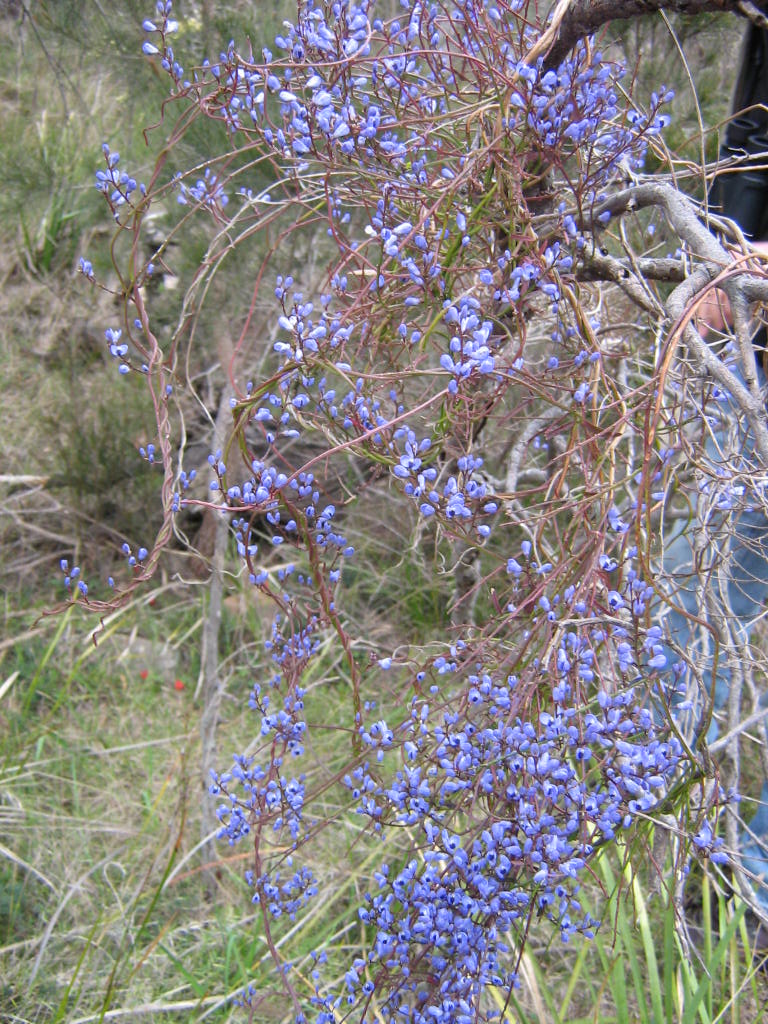Scientific Name: Comesperma volubile
Common Name: blue lovecreeper
Family Classification (Clade): Eudicots
Family: Polygalaceae
Form Description: Perennial twining climber with hairless, furrowed stems.
Height (m): 1 – 3
Flowers: Small, blue or mauve in sprays, on stalks 2-4mm long. Posterior petals yellowish. Flowers sometimes white or pink.
Fruit: Capsule – a small purse-like capsule 10-14mm long. Seeds with a tuft of hairs.
Municipality
Plant Communities
Habitat Notes
Abundant in heaths and dry forests.
Site Tolerance
Dry, Moist, Shady
Soil Tolerance
Clay, Fertile, Loam, Nutrient-poor, Sandy, Well-drained
Frost Tolerance
Moderate
General Notes
A decorative twiner which scrambles through other vegetation. Prefers light shade or partial sun and needs root protection. Will grow in a wide range of soil types and can withstand light to moderate frosts and dry periods. Resistant to Phytophthora cinnamomi. Early settlers used the root as an alternative to sarsaparilla.
Propagation Calendar
-
Flowering Month
Jan Feb Mar Apr May Jun Jul Aug Sep Oct Nov Dec -
Seed Collecting Month
Jan Feb Mar Apr May Jun Jul Aug Sep Oct Nov Dec -
Sowing Month
Jan Feb Mar Apr May Jun Jul Aug Sep Oct Nov Dec -
Cutting Month
Jan Feb Mar Apr May Jun Jul Aug Sep Oct Nov Dec
Propagation Method
Seed Information
Seed Collection
Difficult to grow from seed. Collect into paper bags; store in fridge in plastic envelopes.
Seed Treatment Notes
Difficult to establish as there seems to be a symbiotic relationship required for successful growth.
Cutting & Division Information
Difficult to grow from cuttings.


